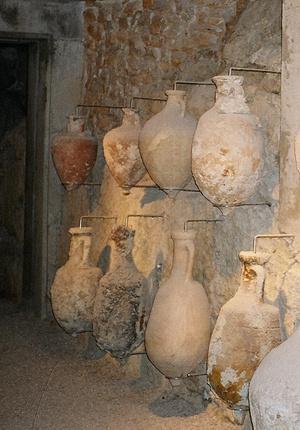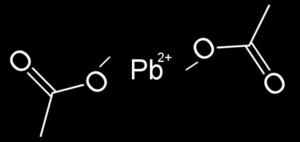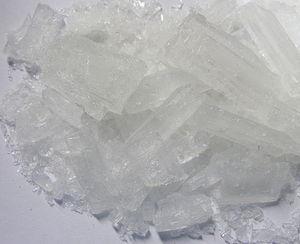The first artificial sweetener poisoned lots of Romans
Keith Veronese
Source - http://io9.com/5877587/the-first-artificial-sweetener-poisoned-lots-of-romans
Romans used an artificial sweetener, Sugar of Lead, to sweeten and preserve their foods without taking on additional calories.

A Roman fresco showing a banquet scene from the Casa dei Casti Amanti.
Sugar of Lead, likely the first artificial sweetener, is now known as the chemical compound Lead (II) Acetate, and it's a poisonous crystalline solid that resembles table salt.
Let's take a look at how the Romans stumbled upon this artificial sweetener, the evolution of its use, and its possible role in the fall of the Roman Empire.
Needs more flavor
The Romans desired heavily flavored food, but lacked sweetening agents. Honey worked, but a large amount of honey is necessary to sweeten, and honey is often in short supply. Grapes, however, are plentiful two thousand years ago in Rome.

Roman winemakers found that boiling of unfermented grape juice created a sweeter liquid known as defrutum or sapa. Defrutumis created by boiling off half the volume of wine, while sapa is the result of a reduction to one-third the original volume of wine.

The dark side of this ancient artificial sweetener
Romans used the sweeter liquids to improve the flavor of existing foods, preserve fruit, and to preserve food for Roman soldiers (Ancient MREs!). The boiling process involved long hours and high temperatures, causing lead to seep out of the container, inadvertently artificially sweetening the sapa . The sweet taste is due to acetic acid in the wine converting to its hydrolyzed form, acetate. Acetate ions combined with lead cations leached from the containers, forming lead acetate.
Winemakers chose lead containers over brass ones when they noticed the lead pots yielded a sweeter flavor. Columella, a Roman winemaker, explained this away by condemning the properties of brass pots, saying:
For, in the boiling [...] brazen (brass) vessels throw off copper rust which has a disagreeable flavor.
A modern attempt to re-create the sapa using lead vessels resulted in a liquid with a lead content of 2,900 parts per billion — one thousand times the acceptable dose in most countries.
Vicious cycle
In time, Romans learned how to make the crystalline form of lead acetate by exposing litharge (lead oxide) to acetic acid (vinegar). If allowed to solidify, lead acetate forms a clear crystal similar to glucose or table salt.
A lead derivative is included in roughly 90 of the 450 recipes included in the Apicius, a late 4th century Roman cook book. Symptoms of lead poisoning include a metallic taste and loss of appetite, leading the patient to consume more food to overcome the poor aftertaste and absence of feeling full.
Romans also used defrutum and sapa to sweeten fermented wines. A typical Roman might drink a liter of wine in a day, and, in doing so, ingest up to 20 mg of lead in the process.
Responsible for the Fall of Rome?
Consistent use of lead acetate to sweeten food led to poisoning in many individuals, and observant Romans determined the correlation between lead consumption and poisoning over time. Scientists eventually determined lead acetate to be the culprit, and the compound lost its place as a food supplement.
Historians argue over the extent of lead poisoning amongst Romans, with some academics suggesting lead poising played a major role in the decline of the Roman Empire. It is certainly plausible, with most blaming lead pipes of the Roman aqueducts for poisoning, and not Sugar of Lead. However, calcium carbonate would likely build up inside the pipes, creating a lining within that would prevent leaching of lead into the water supply. If lead poisoning did play a role on the fall of Rome, it did so as an artificial sweetener, and not as an accidental additive to the water supply.

Modern use of lead acetate
The crystalline solid lead acetate is not completely removed from modern society. The sweet taste accompanied by some lipsticks is due to lead acetate.
Lead acetate also appears as an active ingredient in some hair dyes. The compound, through repeated applications, gradually builds up in the hair, turning the hair a dark brown or black color when it binds to protein. And, in a very unusual use, lead acetate mixed with water is a home remedy for sore nipples.
I don't feel so bad about aspartame anymore
While we certainly do not lack for controversy surrounding today's artificial sweeteners, I don't feel so bad about grabbing a single serving packet to sweeten my morning coffee. I'll stick with sucralose for the time being — at least my options are far better and less dangerous than in Ancient Rome.
Images from CC sources and the New York Academy of Medicine. Sources linked within the article.